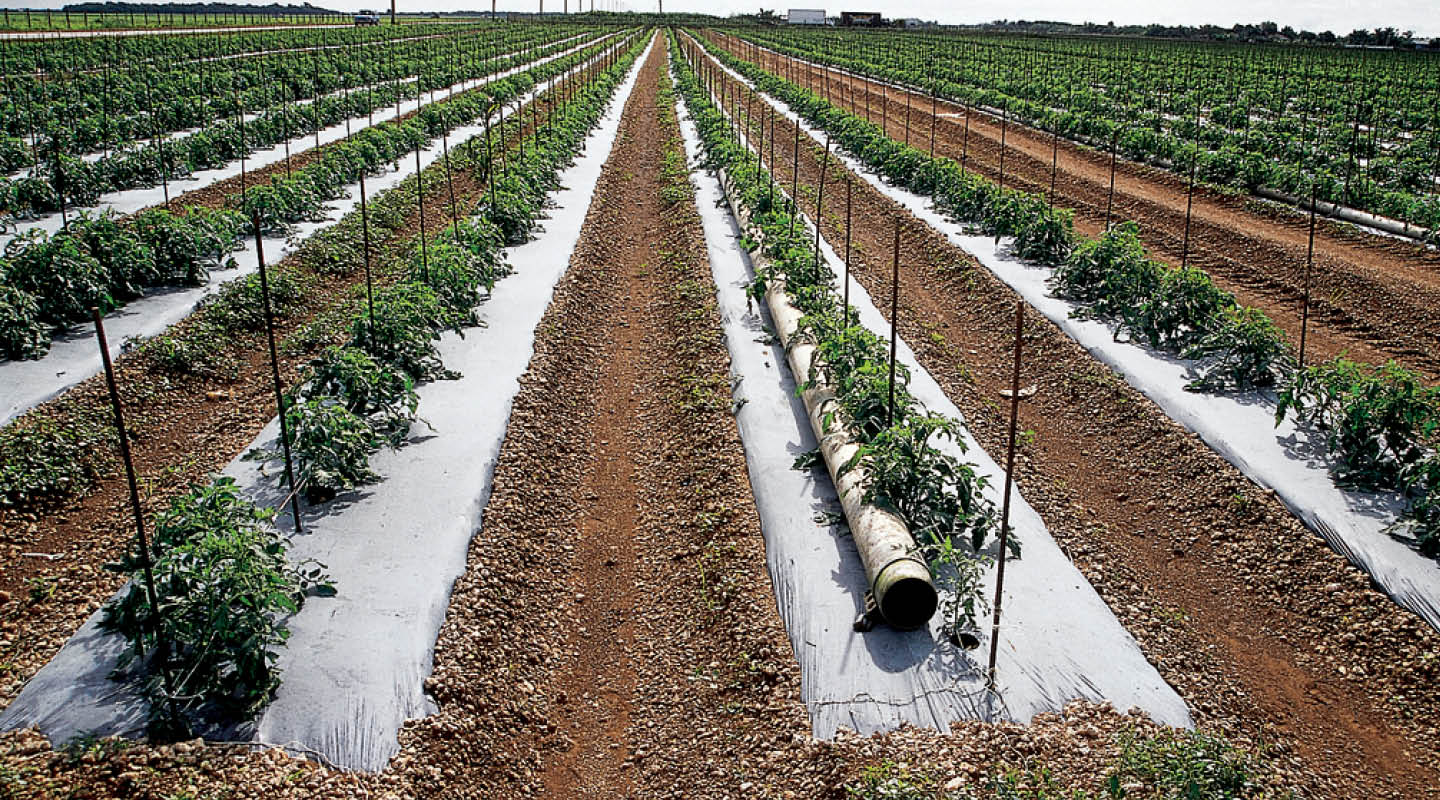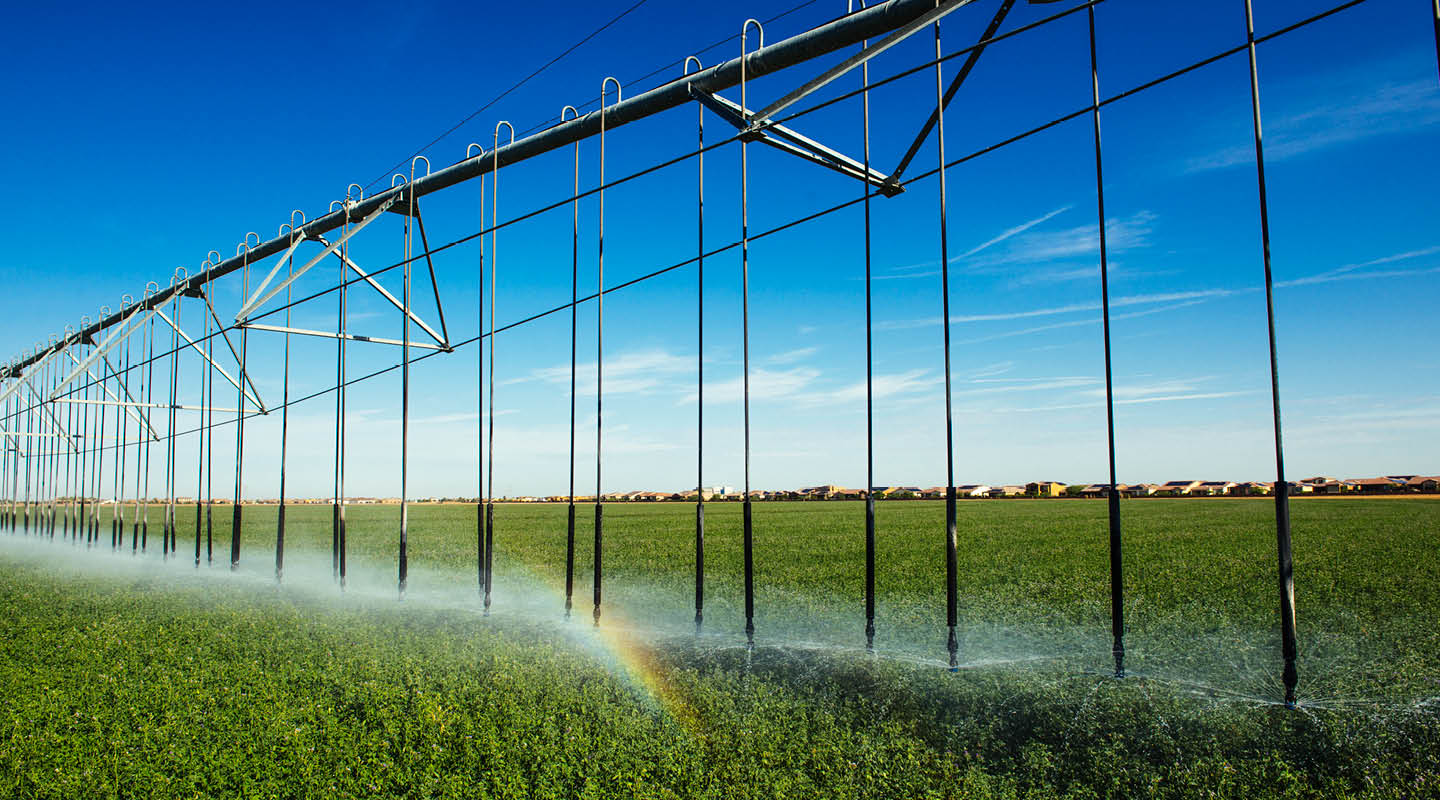Drip vs. Pivot In More Detail
Wait! Before you read this, be sure to check out Part 1 here, where we identified three main factors when considering whether to install a center pivot or a drip irrigation system.
Initial investment cost, labor and peace of mind are the three main things to consider when analyzing drip irrigation against center pivots. But those aren’t the only relevant facts.
Initial Cost
- Pivots typically cost about $712 per acre.
- Drip systems cost almost twice as much per acre.
Resale/ROI
- Drip systems cannot be resold, and their return on investment depends on how long they last, which in turn depends on season after season of due diligence.
- Even after 15 years, a Valley pivot still holds a resale value of 50% of the initial purchase price.
Other Costs
Drip systems require replacement of drip tape
- Drip requires more pressure regulation, leading to increased costs.
- Additional “soft” costs with SDI include increased monitoring and management
Management
- Monitoring drip systems requires more persistence, and can take much longer
- Pivots benefit from more advanced remote irrigation management technology
- Problems with SDI are not always visible; problems with pivots are soon evident
Design and Installation
- The performance of a subsurface drip system is highly dependent on the skill and knowledge of the designer. If done wrong, it will be wrong until expensive fixes are made.
- Drip tape depth must be chosen carefully for compatibility with cultivation practices to ensure the drip tape is not damaged.
- Pivot installations are comparatively simple to design, and are more flexible to changing demands.
Field Size
- Drip is better suited for small vegetable fields, orchards or vineyards.
- Pivots are best for larger fields, although options for small fields exist.
 Drip irrigation is more suited for smaller fields, while pivots cover a larger area and are superior for large fields.
Drip irrigation is more suited for smaller fields, while pivots cover a larger area and are superior for large fields. Corners
- Claims that drip irrigation offers better ROI assume drip irrigates more acres of a standard section, neglecting the existence of corners or benders. Of course, adding additional equipment to your pivot costs a little more, but you will still invest much less upfront with pivot irrigation than with drip.
Germination
- Subsurface drip systems cannot stimulate seed germination if the drip tape is placed below the root zone.
- Sprinkler heads on a pivot apply water similar to the effect you get from rain, causing seeds to germinate. In fact, pivots can easily be fitted with a dual sprinkler package — one for germination and one for irrigation.
Plugging and Leaking
- Clogging is a persistent problem with drip
- With a drip system, you must apply acid and periodically chlorinate the drip line to dissolve mineral concentration that can plug emitters.
- The above-ground sprinklers on a pivot are visible at all times, so plugging and leaking aren’t a problem.
- An average nozzle on a pivot is 16 times larger than a drip emitter.
Filter Maintenance
- You must constantly monitor drip system filters, then flush or change them when necessary to prevent system failure.
- Typically, filtering is not required when using a pivot or linear.
Water Quality
- SDI requires more water quality management than pivot irrigation. If the quality of the water source changes, complex problems could result.
- Pivot sprinklers are not as susceptible to algae or mineralization
 The high profile of above-ground sprinklers on a center pivot covers a large area and makes them easily accessible for maintenance.
The high profile of above-ground sprinklers on a center pivot covers a large area and makes them easily accessible for maintenance.Wastewater Application
- To help save your freshwater supply, center pivots are often used for controlled application of wastewater and nutrients on forage and grain crops. Because Valley pivots can handle solids, advanced filtration is not necessary.
- Applying wastewater through drip irrigation is much more complicated. Different tape with larger emitters and more filtration is needed, and plugging occurs much more frequently.
Terrain
- Pivots work well regardless of the terrain; drip systems are less effective on sloped surfaces
Roots
- SDI can restrict plant root development
- Roots from some perennial crops may pinch or intrude into dripline in some soils and depths, requiring additional herbicide application
Salt Build-Up
- Drip irrigation can cause salt to accumulate at the dividing line between the irrigated zone and the non-irrigated zone in the soil, so that the soil becomes salinized over time. Eventually a sprinkler system will have to flush the accumulated salt below the crop root zone for the field to remain fertile.
- Above-ground sprinklers distribute water evenly over the surface, which irrigates the crop and leaches the salts in the soil to below the root zone.
Pests
- Rats, crickets, corn borers, and mealy worms can attack vulnerable drip tape and cause leaks. You must dedicate a lot of time and money to combat these pests.
- Pests cannot easily damage the steel structure and spray nozzles of a center pivot.
Crop Rotation
- With a drip system, crop rotation is difficult because of the predetermined row spacing.
- With center pivots, you can easily rotate your crops as often as necessary, or your pivot circle can be segmented with different crops.
Environmental Impact
- Drip tape technology is improving, and some can last for many years. Still, depending on the crop and the thickness of the tape, you may need to move it every year and replace it every five.
- After that, many drip irrigators have to contact hazardous material experts for proper disposal of the used tape.
- Valley equipment is made of 100% recyclable steel, and is easy to remove.
Other limitations
- With drip, tillage options may be limited.
- Drip has limitations in light and sandy soils.
Even after this comparison, you might still need more information. Your local Valley Irrigation dealer is an excellent resource to answer all your questions and work with you to determine the right solution to irrigate your crops in any terrain or soil type. Contact yours today.